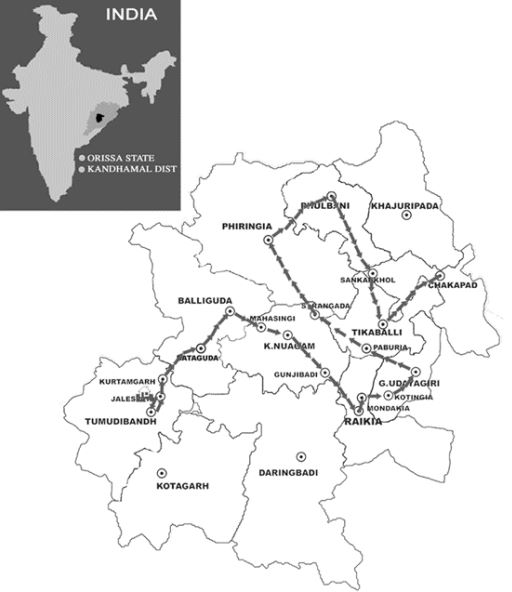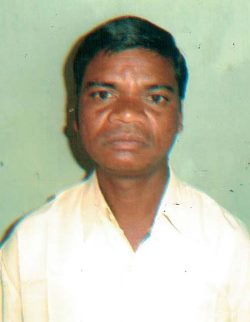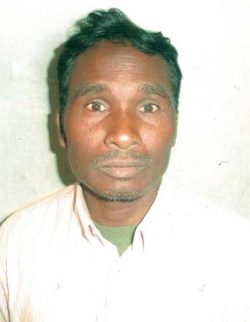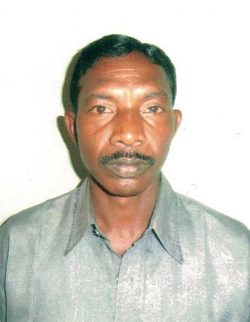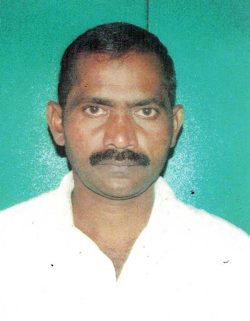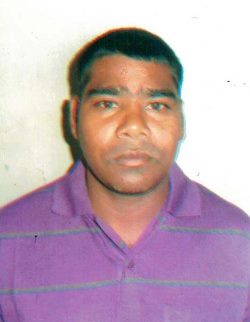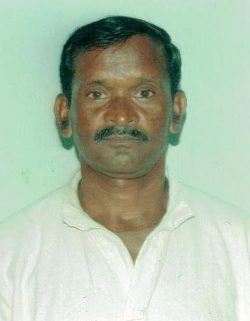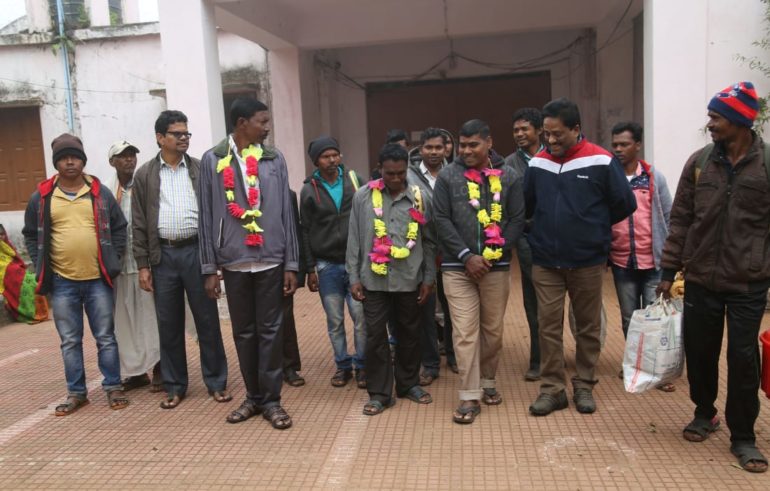
Eleven years ago today, 13 December 2008, an Indian man was arrested. Initially, he suspected it would be quickly resolved – he was active in local politics and assumed it was for something minor connected to that. But it was to be over ten years before he would get his freedom, May 2019 in fact.
His cousin, a pastor, accompanied him to the police station, and saw him taken away. A couple of days later, after Gornath Chalanseth had not returned, the cousin went back to the station and heard that his cousin had been charged with the murder of a Hindu monk, Swami Laxmanananda Saraswati, who had been shot dead on 23 Aug, 2008 as Hindus celebrated Janmashtami, the birthday of Hindu lord Krishna.
That same day exactly 13 years ago, three other men were also arrested: Bijay Kumar Sanseth, Bhaskar Sunamajhi and Buddhadeb Nayak.
A false rumour had spread like wildfire that it was Christians who were responsible for the murder.
This rumour had fertile ground on which to spread. In the days that followed the murder, the Swami’s body had been taken on a funeral procession across Kandhamal, in the eastern Indian state of Odisha (Orissa) “accompanied by thousands of Hindus … to incite the primordial passion of revenge among Hindus in one of the least developed districts of Odisha”, notes a website set up to campaign for Chalanseth and six others sent to prison for life for the murder: www.release7innocents.com.
“[The Hindu activists] wanted to make a spectacle of [the body], and were prepared – as events were to prove – to take full advantage of the passions that would arise. They did not even go by the shortest route, but meandered across [Kandhamal],” noted a report by a group of human-rights organisations. (See route below.)
Thus, the Swami’s murder triggered the worst outbreak of violence against India’s Christian population for several hundred years. Nearly 100 Christians were killed and 300 churches and 6,000 Christian homes damaged in the Kandhamal district of Odisha. 56,000 Christians were displaced by the violence. Three-quarters of the damage done to Christian homes took place along the route of the funeral procession, the website reports. Among the slogans shouted was, “Kill Christians and destroy their institutions.”
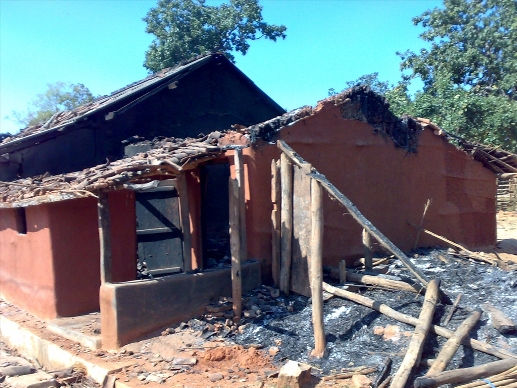
In Oct 2008, a top Maoist Naxalite leader claimed responsibility for the Swami’s murder. He was eventually arrested in July 2014, and convicted of the Swami’s murder in May 2019. Three days after that, Gornath Chalanseth was finally freed from prison, 10 years, five months and six days after he had first visited the police station with his cousin. But his sentence to life imprisonment has not yet been lifted.
The seven – three of whom are Dalits, the other four tribals – continue to maintain their innocence. Six of them are illiterate, one of them is mentally challenged.
Gornath Chalanseth had his bail application appeal filed in the Supreme Court after the Odisha High Court had rejected it for a second time last December.
The second, Bijay Sanseth – the only one in the group to go to school in childhood – was freed in July.
This past week, the remaining five have all been freed: the final man had to wait an extra few days as his prison was 80km from where the bail order was issued, and the authorities insisted on the order being posted.
Once given bail, there is no deadline to return to jail unless ordered by the Supreme Court.
But the men still have to be acquitted from their conviction by the Odisha High Court.
“When we were convicted (in 2013), it was a shock. It was very stressful for me when I put behind bars for murder, despite being innocent” Chalanseth told World Watch Monitor as he walked free in May.
He, along with the six others – Bijay Sanseth, Bhaskar Sunamajhi, Buddhadev Nayak, Durjo Sunamajhi, Sanatan Badamajhi and Munda Badamajhi – was convicted to life imprisonment by the third judge on their case, after the first two judges had been transferred away from it.
Background
Nearly 100 Christians were killed and 300 churches and 6,000 Christian homes damaged in the Kandhamal district of Odisha, after the killing of Swami Laxmanananda Saraswati on 23 August 2008.
By the end of that year, the seven had been arrested. In 2013, they were found guilty of the murder by the Odisha High Court and each sentenced to life imprisonment.
The convictions shocked India’s Christian community, which was still reeling after the deadly attacks, and Christian advocates have been fighting for their release ever since.
Since 2008, the local community has also struggled to receive adequate compensation from the government, which has been a source of much contention. A decade on, the Odisha High Court forced the Odisha government to make available more than 153 million rupees (US$2.28 million) to pay compensation to about 6,000 people who either lost family members, were injured or who lost their homes in the riots.
The state of Odisha (which says it is acting as per a Supreme Court order) set Nov. 30, 2019 as the final date for victims of the riots in 2008 to claim additional compensation.
Church leaders, while grateful for the offer, say this is impractical “because the Odisha government has not set a mechanism for how to reach those affected,” as one said.
A.C. Michael, a Christian leader whose organization Alliance Defending Freedom (ADF) has been one of the petitioners on behalf of the Kandhamal victims, said he was still pursuing a few outstanding claims.
The former member of the Delhi Minorities Commission added: “We are in touch with all concerned to check if anyone still has not applied for compensation. If we get to know of any who have not claimed before the deadline, we do plan to apply on their behalf.”
A conspiracy?
The website release7innocents.com outlines the major discrepancies and apparent injustices in the case against the Christians.
“The trial court convicted the seven accused and sentenced them to life imprisonment on the basis of a fabricated ‘Christian conspiracy theory’ despite hardly any credible evidence brought before the court,” it states.
The website complains that these discrepancies within the case against the seven were apparent right from the start, when Hindu fundamentalists blamed Christians for the Swami’s murder.
Last December, the lifetime prison sentence given to a top Indian politician for his involvement in riots that led to the killing of 2,700 Sikhs in 1984, gave hope to India’s Christian minority still waiting for justice.
Anto Akkara, a journalist who’s completed several books and produced a documentary ‘Innocents imprisoned’ in English, Odia, Hindi or Malayalam, refers to the conviction of the seven men as a great “conspiracy”.
“There is absolutely no shred of evidence that links these people to the murder…According to my documented investigation, all these seven were not present near the place of murder on that day. They were at least 50 km away. Munda is speech-impaired and Duryodhan was on a train to Kerala in search of work when the [swami] VHP leader was murdered. The whole case is a blot on the face of India’s judicial system – why have these illiterate, innocent people been convicted?”
The website urges readers to sign a petition for the acquittal of the seven. Each online signature generates instant emails to India’s President, the Chief Justice of India’s Supreme Court, the Odisha High Court and the Chairman of the National Human Rights Commission.
Seven “innocent” men and their stories
1. Sanatan Badamajhi
Sanatan Badamajhi’s wife Badusi said that a few days before her husband’s arrest, on 4 October, 2008, some of the Hindu village leaders had warned him that he would soon be arrested.
But on the day of the Swami’s murder, Badamajhi, 36, had been tending cattle and sheep, according to a Hindu neighbour, Nakula Mallick.
“Police never came to investigate or ask anything about him. If we had been called, we would have testified for him in the court,” said Mallick.
The judge said a gun was seized from Badamajhi’s house, but his wife says they never owned a gun.
Police also claimed to have seized an axe from the house, but his wife said the police brought the axe from the house of Mukantho Mallick, a Hindu neighbour, who had accompanied the police to identify the house.
“Later, Mukantho has been repeatedly complaining that the police took away the axe. I had only one axe and it is still in my house,” she said.
2. Munda Badamajhi
Munda Badamajhi, 34, was arrested on the night of 4 October, 2008, at his home in the village of Duringpodi.
The prosecution said it recovered a gun from Badamajhi’s home, but his wife, Bandigudali, said her husband did not even know how to use a gun.
“We never had a gun and my husband could not even use a gun,” she said. “This is shocking.” Munda has a speech impairment.
3. Durjo Sunamajhi
Durjo Sunamajhi, 35, was woken up on the night of 4 October, 2008, when police barged into his house in Budapada village and took him away, as well as the barrel of a broken gun that they found in his house.
His wife Gumili said her husband was on a train towards Kerala on the day of the Swami’s murder and had never touched the gun, which she said was an old and broken hunting rifle last used by her husband’s grandfather.
“The government claim is that they recovered two guns [from the houses of these people], but actually only one barrel of a broken gun, which has not been used for years, had been picked up,” said Akkara. “[Gumili] says her husband never used it, her husband’s father never used it; only her husband’s grandfather used it. Imagine! And there was only a barrel of the hunting gun. Now, the government claims to have recovered two guns from two houses, but in the judgment the judge says he has got the three guns, and he names the three! How is that possible?”
4. Bijay Kumar Sanseth
Sanseth’s wife, Pabitra, said police phoned her on 12 December, 2008, and told him to report to the police station the next day. He did so, and had been detained until July 2019.
However, police recorded events differently, saying that on 12 December Sanseth met three of the other accused Christians at a Maoist meeting in a jungle near the village of Sartuli. They added that Sanseth, 42, had been overheard discussing plans to murder the Swami outside Kotagarh High School. This claim was attributed to a witness, Mahasingh Kanhar, who initially denied the claim, but eventually endorsed it during a retrial.
“Wherever I go, people tell me: ‘He was a good man. Why he is in jail?'” said Sanseth’s father, Salei. “The popularity of my son and his high contacts with government officials have led to this tragedy. Many were jealous of him.”
5. Bhaskar Sunamajhi
Bhaskar Sunamajhi, 32, was playing cards with his friends in the village of Kutiguda when police came to collect him on 13 December, 2008.
“You can return tomorrow,” his wife heard them say, when they took him away. But after more than nine years, Sunamajhi had not returned home till Dec 2019.
The judge said Sunamajhi was “hand in gloves” with the Maoists and had undergone several weeks of training at a Maoist camp. However, his wife Debaki said he “never ventured [far] from home”.
Biracha Paraseth, a neighbour, added: “This is a total lie. He was with us on the day [the Swami was killed]”.
Pavitra Sanseth, another neighbour, added: “He is a good man. He will not do such a crime like killing of a Hindu leader. All of us feel very bad about this. Sir, if we all could have gone [to court] and explained his innocence, please tell us how we can help and ask for his release.”
6. Budhadeb Nayak
Before his arrest, one of the village elders urged Nayak, 42, to go into hiding, but he refused, saying he had done nothing wrong.
Police later came to his house, threatening his eldest son, 20-year-old Lingaraj, that they would soon arrest his father.
On the night of 13 December, 2008, they came back and Nayak was arrested.
“He was wearing only a [sarong]. They tied his hands to take him away. He asked for clothes and I gave him a shawl,” recalled his wife, Nilandri.
Three days later, the family visited him in Balliguda jail. The police said he had been with Maoists in the jungle on 12 December, alongside three of the others accused.
7. Gornath Chalanseth
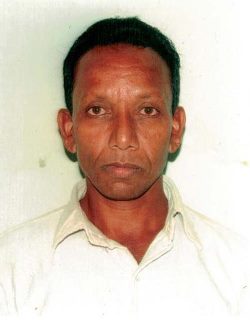
His cousin, a pastor, accompanied him to the police station, and saw him taken away.
A couple of days later, after his cousin had not returned, he went back to the station and heard he had been charged with murder.
